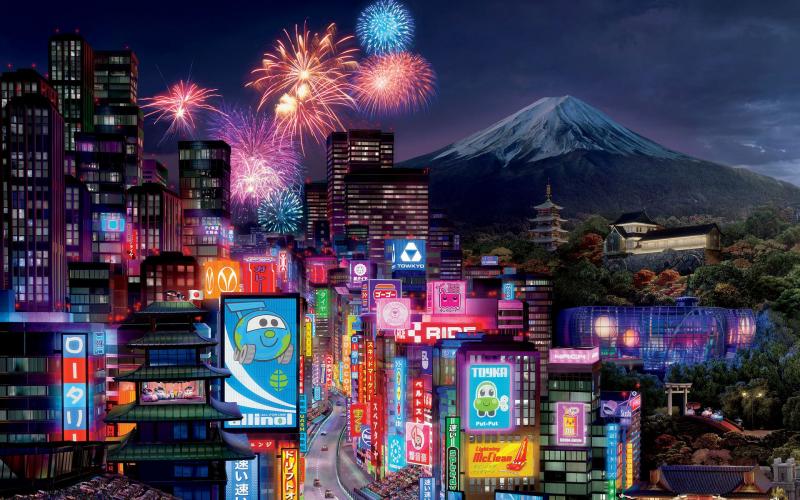
Japan- Urban Cities & Rural Landscapes
By Laura Blake
Japan was forged upon contrasts. Sleek city sky scrapers are surpassed only in height by soaring mountain vistas, whilst tiny rural villages remain untouched by the advance of the 21st Century that has taken over the gargantuan cities with such ease. And this is the essence of this captivating country – Japan is a swirling, intoxicating kaleidoscope of fast paced modernity and peaceful country lifestyles. It is a land of innovation and time old traditions, no nonsense efficiency and relaxed tranquillity. A trip from the urban metropolises to the heart of Japanese countryside will capture your senses in the most unexpected of ways, so take the time to venture outside of Japan’s modern cities and explore the beauty of this country in all its many facets.
City Living
Tokyo has a pulsating energy and an effervescent atmosphere. With its own take on New York’s Time Squareand the Sky Tree –a dizzyingly impressive structure that puts Paris’ Eiffel Tower to shame – at its heart, it is quite easy to dismiss Tokyo as just another capital – loud and relentless, with its eye fixed firmly on the future. But whilst it is a city that is constantly reinventing itself, it still manages to seamlessly blend the old and the new – embracing modernity and welcoming in technological advances with an ancient prayer.
This amalgamation of tradition and innovation means that Tokyo sets its own rules– yet it’s a system that works brilliantly. The planet’s most densely populated city is known for its ever advancing skyline, and yet Tokyo’s foundations are not made of cement, rather tradition and spirituality. Despite its population of around 13 million, public transport runs on time, and the streets are clean and virtually crime free. Its (many) Michelin-starred restaurants are just as sought after by tourists as a glimpse of the vibrant fashion sub-cultures that rule the city’s back streets. Activities like shopping or sightseeing require whole day’s dedication, whilst even eating will turn into pilgrimage as you seek out the city’s best sushi or soba noodle bars. Tokyo is truly as surreal as it is fantastic.
Nature at its Best
Every spring, Japan’s famed cherry trees carpet the landscape in a blanket of pink silk. Anyone travelling during this season is likely to witness this exceptional event, but few may realise just how seriously the Japanese treat this celebration. Hanami (flower viewing) is the annual Japanese custom of enjoying the blooming foliage; after a long winter, nature flourishes once again and the air is filled with colour and fragrance.
To see the cherry blossoms in all of their glory, it is best to leave the city behind. Mount Yoshino is widely believed to be Japan’s best location for hanami. In early April, approximately 30,000 cherry trees burst into colour, painting the mountain fromShimo-senbon (the foot) to Oku-senbon (the peak) in a suffusion of delicate pink.
However, those in more urban areas needn’t feel like they are missing out. Every spring, the Japan Mint in Osaka opens a 560 metre long passage to the general public for one week exactly. This walkway alongside the Yodo River has long been acclaimed for its beauty – but it is never as lovely as it is when the cherry trees are in bloom. The Japan Mint has been following this custom since the end of the 19th Century, allowing visitors to enjoy the 120 different varieties of cherry tree.
Ancient Magic
For over a thousand years, Kyoto served as the capital to Imperial Japan. Despite the seat of power moving to Tokyo in 1868, this city that sits in the beautiful Yamashiro Basin is still dotted with glorious relics of the past. If you want fast paced city style, you’d be better off visiting Tokyo; despite being the eighth largest city in Japan, life here is more akin to an ancient village governed by archaic spirituality.
There are over 1,000 Buddhist temples in Kyoto. The best known is easily Kinkaku-ji, the famed Golden Pavilion. Though a glorious monument of worship, few know that this stunning temple, built in 1397, was originally intended to be a private villa! Shinto shrines are also in abundance; Fushimi Inari-taisha is quite simply one of the most breathtaking sights in all of Kyoto.
Take the time to wander slowly around Kyoto’s heart and you will be rewarded with a glimpse of the Japan that once was; admire the beautiful architecture of the city’s machiya (traditional townhouses) or visit the old shōtengai (shopping streets) for a bust of colour, mouth-watering aromas and activity. Rest your feet and enjoy the beautiful dance of the geisha or see the sites at your leisure from a rickshaw – in Kyoto, the old way of life still reigns supreme.
Wild at Heart
The first of Japan’s 13 national parks was established in 1931. If you long to escape the chaos of the country’s heavily populated cities and towns, it is not difficult to find wide open spaces and fresh, clean air.
At 2,267 square kilometres, the Daisetsuzan National Park is the largest of its kind in Japan. Daisetsuzan literally translates to ‘great snowy mountains’, an apt name for this exquisite area – the park incorporates the Diasetsuzan, Tokachi and Shikaribetsu Volcanic Groups, and it is the perfect place for anyone who truly wants to explore rural Japan. Noted for its wildlife conservation efforts, the park is home to several rare species, and is particularly noted for its population of brown bears and pika, a small mouse like mammal.
Japan’s most visited national park, Fuji Hakone Izu is famous for its hot springs, the Izu Peninsula and of course, Mount Fuji, which stands resplendent against a beautiful natural backdrop of dense forests and shining lakes. The almost perfect form of the volcano has seen Fuji worshipped for centuries as a scared mountain, and it continues to capture the imagination today. Fuji Hakone Izu, like so many of Japan’s other national parks, is proof that you don’t always need to visit a temple or shrine to find inner peace.
Share this article:



















